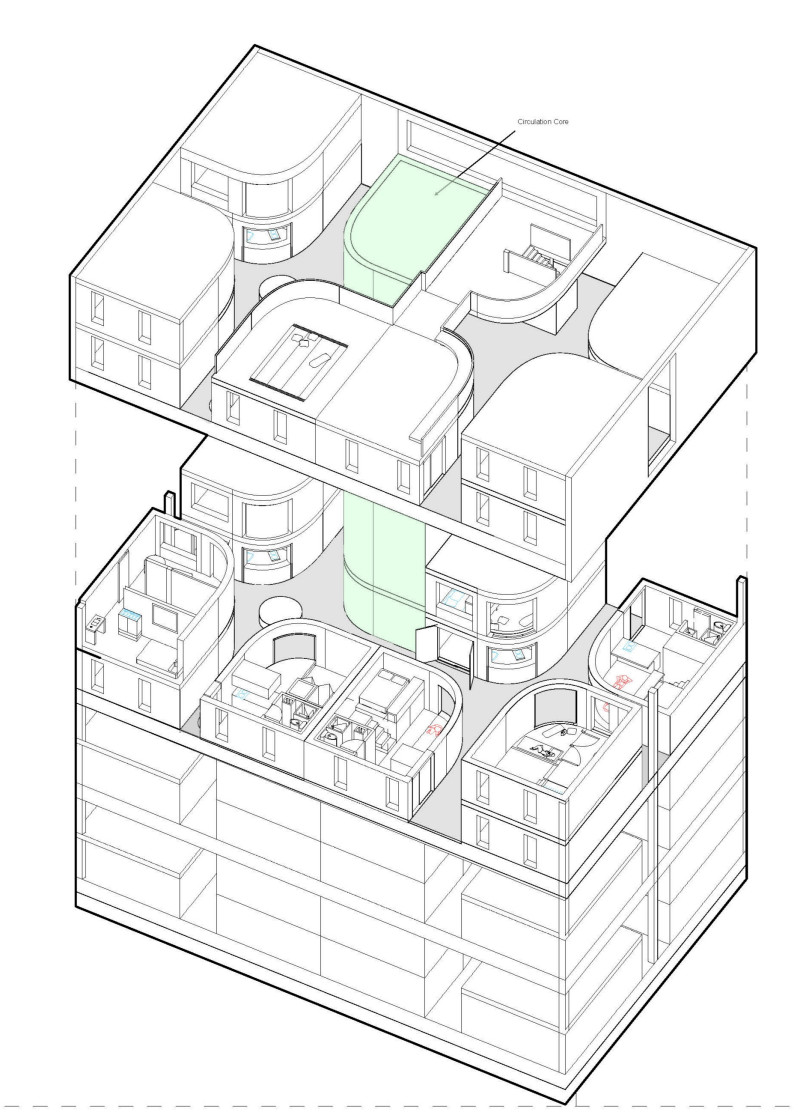5 key facts about this project
At its core, this architectural endeavor revolves around the concept of modular living units that can be easily configured and adapted based on the varying needs of individuals and families. Each unit serves as a significant component of a larger whole, reflecting a design philosophy that emphasizes collective well-being and community connectivity. By enabling residents to "scoop" pods into a cohesive structure, the project represents a new model for urban dwelling, which is both efficient and flexible.
The primary function of this architecture is to serve as affordable housing, a necessity in many urban settings where space and resources are often limited. The residential units range from small studios to larger family apartments, providing options that cater to a diverse demographic. The spatial organization of the units demonstrates careful consideration of privacy and communal areas, ensuring that while residents have their private retreats, there are ample opportunities for interaction and engagement within the community.
Key details of the project include the use of Cross-Laminated Timber (CLT) as the main structural material, which not only supports the physical demands of the building but also aligns with environmentally conscious building practices. This choice of material contributes to the overall sustainability of the project, providing both thermal efficiency and a sense of warmth within the living spaces. In addition to CLT, the architecture incorporates gypsum board for interior finishes, glass panels for ample natural light, and steel for additional structural support, each selected for their functional and aesthetic contributions.
The modular nature of the design also invites a unique approach to urban living. The ability to rearrange units allows for the accommodation of shifting demographics and evolving community needs. This flexibility is particularly relevant in an urban context like Melbourne, where family structures and living arrangements are continually changing.
A noteworthy feature of this architectural design is the emphasis on communal spaces, which serve multiple functions ranging from social interaction to recreational opportunities. Rooftop gardens and shared amenities like communal kitchens and lounges create environments that foster neighborly relationships. These shared spaces not only enhance livability but also cultivate a sense of belonging among residents.
Moreover, the inclusion of dedicated childcare facilities within the project reinforces its family-oriented design. By addressing the needs of families with young children, the architecture demonstrates a comprehensive understanding of modern urban life, where convenience and community support can significantly impact residents' quality of life.
The project's design approach reflects an integrated understanding of both environmental sustainability and the social fabric of community living. Each component is thoughtfully considered to create a cohesive environment that balances individual needs with collective well-being. The project stands as a model for future architectural developments aimed at fostering community interaction through innovative design while addressing pressing urban housing challenges.
For those interested in delving deeper into the specifics of this architectural project, I encourage you to explore the details of the architectural plans, sections, and designs that illustrate the thoughtful ideas underpinning this endeavor. By examining these elements, readers can gain valuable insights into the project’s vision and how it represents a pragmatic yet innovative solution to modern urban living.























